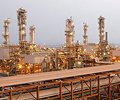
Gas-fired electricity production has dropped to record lows in the home country of Europe’s largest gas-trading hub, dealing a fresh blow to natural gas bulls who eye Europe as a key growth market for sales of LNG and pipelined gas supplies.
The Title Transfer Facility in the Netherlands establishes the main benchmark natural gas price for most of Europe, and the Netherlands’ extensive pipeline networks and central location give it insight into gas supply and demand trends.
The Netherlands itself has historically been a heavy gas consumer, and from 2000 to 2020 relied on natural gas for well over half of its utility electricity supplies, according to energy thinktank Ember.
However, since Russia’s invasion of Ukraine in 2022, Dutch utilities have aggressively slashed natural gas use, and over the first half of 2025 gas power plants supplied only a third of the country’s electricity.
For major natural gas producers and exporters such as the United States, Russia and Qatar, the rapid and sustained cuts to gas use by a formerly integral gas consumer are cause for alarm, as it may herald further cuts for Europe as a whole.
SMALL SCALE, BIG IMPACT
Despite its relatively small size and population, the Netherlands wields considerable influence regionally and globally.
The country’s massive port facilities around Rotterdam are the main entry and exit points for crude oil, refined products, crops and many consumer goods into and out of Europe.
The Netherlands is also home to a large high-tech industry and several multi-national corporations which rely on the country’s strong infrastructure and global connections.
The country’s strategic importance is reflected in the status of the Dutch government, which is highly influential within the European parliament and plays a key role in shaping regional policies on trade, agriculture and finance.
CLEAN DRIVE
Dutch utilities have also been leaders in adopting clean energy supplies, despite once being home of the headquarters of oil and gas major Shell SHEL.
Between 2022 and 2024, electricity production from clean power supplies jumped by 27% in the Netherlands compared to a 16% rise in clean power output within the European Union over the same period, Ember data shows.
That outsized growth was driven by a 57% jump in wind power and a 34% rise in solar power electricity generation.
That aggressive increase in renewable energy sources in turn changed the balance of the country’s electricity generation mix.
Until 2023, the country was primarily powered by fossil fuels, but since then clean energy sources have become the primary fuels for electricity generation and so far in 2025 have generated 57% of the country’s electricity.
Despite the switches, electricity supplies scaled record highs in 2024 to ensure that the country’s electricity output kept up with demand needs.
Wholesale power prices in the Netherlands have also remained competitive within Europe as the Dutch power system cut back on gas use and added clean power output, and so far in 2025 have averaged slightly less than those of Germany.
Over the first half of 2025, Dutch wholesale spot power prices have averaged around 90 euros per megawatt hour, according to LSEG.
That price is roughly a third more than those in nuclear-powered France, but is lower than the average prices recorded in several other European nations including Italy and most of Eastern Europe.
The fact that Dutch power costs have remained in line with the regional average despite sustained reductions to fossil fuel use in electricity generation will likely influence the energy planning of other nations in the region.
The successful transition from fossil fuels being the main pillar of the country’s electricity system until 2022 to a more minor role in 2025 could be seen as a blueprint for other utility networks also keen to cut back on fossil fuel use.
And given the country’s prowess in rolling out clean energy supplies, Dutch firms with expertise in offshore wind, solar systems and batteries are collaborating with other regional utilities to lift clean power output in other countries.
Dutch firms are also pioneering the deployment of green energy to produce green hydrogen, which regional industries are hoping will help decarbonise their power needs and further reduce regional reliance on fossil fuels.
All together, the Netherlands has generated strong momentum in its clean-energy push, which looks liable to extend well beyond its national borders and could result in further Europe-wide cuts to gas consumption in the years ahead.
Source: Reuters